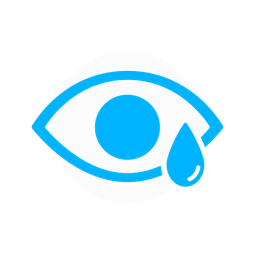Taking care of your eyes is one of the most important aspects of safeguarding your well-being. That’s why you should have them examined by a professional regularly, just as you would with the rest of your body.
Routine eye exams can help manage and may even prevent various eye conditions, including dry eyes. But what exactly can you expect from this upcoming appointment? During a comprehensive eye exam, your optometrist performs a series of tests to help determine your prescription and uncover any ocular health issues.
The Importance of Regular Eye Exams
Our eyesight is an essential part of our daily lives. A wonder of evolution, vision allows us to enjoy nature, appreciate art, and connect with others. That’s the primary reason we recommend regular eye exams. How regular? At See Eye Clinic, we recommend:
- Babies and toddlers should have their first exam between 6–9 months and annually after the age of 3.
- 5–19 years: 1 exam every 12 months
- 20–64 years: 1 exam every 2 years
- 65+: 1 exam every 12 months
Many eye diseases and conditions, such as glaucoma, cataracts, and age-related macular degeneration, develop slowly and often without noticeable symptoms in the early stages. By undergoing regular eye exams, your optometrist can examine the retina, optic nerve, and other parts of the eye for signs of damage or disease. Detecting eye problems early provides a better chance of treating the condition before it causes irreversible damage.
Eye exams can also uncover signs of other health problems like high blood pressure and heart disease.
If you already have a pre-existing condition that affects vision, such as diabetes, you may require more frequent eye exams to help manage the condition. An optometrist can monitor changes in the condition’s progression, recommend treatment modifications, and provide referrals to other specialists if necessary.
And, of course, an eye exam is essential if you wear glasses or contact lenses so you can keep your prescription current and your vision sharp.
What Tests Do Optometrists Perform?
The first step in a comprehensive eye exam is typically a pre-exam interview. This is the time for your optometrist to ask about any current eye problems, but also to review your medical history and any medications you’re taking. Many eye diseases are more likely if you have a family history of them, so the more information you can provide your optometrist, the better we understand your overall eye health and any potential risks or issues.
Next, your optometrist can conduct a series of tests to assess your vision and eye health.
Measuring Your Lens Prescription
The first step in determining your prescription is typically a visual acuity test. This simple examination involves looking at a chart or screen, usually from a distance of 20 feet and identifying letters or shapes of decreasing size. The Snellen chart test is the most common type of visual acuity test and is likely what you’ve taken before.
Of course, children need their vision tested too. If your child is too young to know their letters, your doctor can perform this test with shapes or images instead.
Your optometrist can follow this up with a refraction test. Using a computerized refractor, your optometrist shines a light in your eyes and measures the amount that reflects off the retina, the layer of cells at the back of the eye. This is called retinoscopy, and it’s been performed for many years. It’s a simple and comfortable test for most patients.
To determine your exact prescription, your doctor may finish by repeating the visual acuity test, but this time with a phoropter. This mask-like device sits in front of your eyes, allowing your optometrist to quickly switch out lenses. You’ll indicate which one makes the letters on the eye chart appear clearer so we can determine the combination that offers the closest to 20/20 vision.
Examining Eye Health
With your prescription complete, we can now focus on your overall eye health. These tests involve taking a closer look at your eye’s structures and looking for abnormalities.
Using a slit lamp, an optometrist can examine the front part of your eye such as the cornea, iris, lens and anterior chamber. The slit lamp produces a thin, bright beam of light that the optometrist uses to examine and magnify the eye’s front surface.
We also use various diagnostic tools to get a clear view of your current health, including:
- AdaptDX to test for macular degeneration
- Corneal topography to determine your cornea’s health and diagnose refractive errors
- OptoMap Retinal Imaging to capture high-quality images of your retina
- Neurolens device to measure if your eyes can align correctly
An essential test during a comprehensive eye exam for anyone over 40 is glaucoma testing. Glaucoma is a family of diseases that affect the optic nerve and cause vision loss. Early glaucoma symptoms can be undetectable without an eye exam. An optometrist can use retinal imaging and tonometry to look for these early signs that slip by unnoticed.
Tonometry measures the defining feature of most types of glaucoma, an increase in eye pressure. Using a gentle plunger or a brief puff of air, your optometrist measures your eye’s internal pressure and, if we suspect glaucoma, can help create a personalized management plan.
Book Your Eye Exam in Winnipeg Today
Once all of the tests are complete, you and your optometrist can go over the results. If something comes up, we can discuss recommendations or treatment options. This is also a great time to ask any questions that you may have about your eye health or any concerns that you have about your vision.
We hope that by knowing what to expect from a comprehensive eye exam, you’ll understand how important they are for your eye health. Don’t neglect your vision, book your eye exam at See Eye Clinic, and invest in a future of clear skies and bright eyes.




















